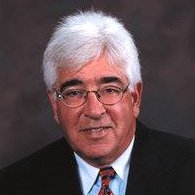Some Suggestions to Insure Case Presentation Success.
February 21, 2018
A week ago I wrote about preparing a patient for a second visit consultation. At that second visit, here are some tips to keep in mind.
1. Treatment presentation is done in a dental operatory and not in a separate consultation room. The patient is seated in the dental chair in the upright position- not lying down in what I would call a defenseless position. Eye to eye contact with the doctor sitting in his/her chair. I like the treatment room as opposed to a consult room because just in case you need to confirm something clinically, you can tilt the patient back to see something – and then return the patient to the upright position for your communication.
2. Your job prior to the consult visit is to design and price out three treatment options – the total cost along with the estimated insurance coverage if applicable for all three choices.
3. Don’t show the patient any x-rays. They have absolutely no idea what they are looking at. It took you two years of dental school to be able to interpret films.
4. Don’t draw squiggly lines on the bracket table cover. I don’t know why so many doctors do this, but it is a very ineffective way to describe or illustrate a procedure.
5. Instead, use photographs of perfectly shaded posterior and anterior crowns along with photographs of poor quality color crowns with gold margins showing in order to illustrate what “your” crowns will look like. When you talk about crowns, patients might have a negative perception based on what they have seen in other peoples mouths.
6. I love using an iPad to show clinical examples. The color is amazing and the experience is very interactive. (link to blog post)
7. Let the patient hold the study casts. Obviously the casts should be properly trimmed and cleaned and polished.
8. Use language that a 10 year old can understand. Do not use clinical words like margins, occlusion, etc. Talk about “cavities” and not “decay”. From the time kids are 3 years old, they know that cavities are a bad thing.
9. Present the three options for treatment. The sequence is to present the best option first – but we don’t call it the best. We say “one way, a second way and a third way.”
Now listen to how I present the three treatment options for a typical scenario of a precipitating event. Tooth #30 had a large amalgam restoration. The precipitating event was that the lingual cusp sheared off. Tooth #31 and tooth #29 are also restored with large amalgam restorations that are suspect but still intact. The patient qualifies for this 2nd visit because there is the possibility or potential to perform 2 or more indirect restorations in the quadrant where the precipitating event has occurred.
In my next blog post I will teach you how to close this case effectively.
No Comments
No comments yet.
RSS feed for comments on this post.
Sorry, the comment form is closed at this time.

